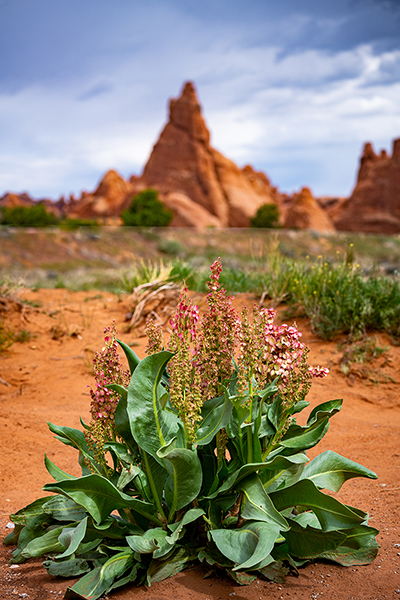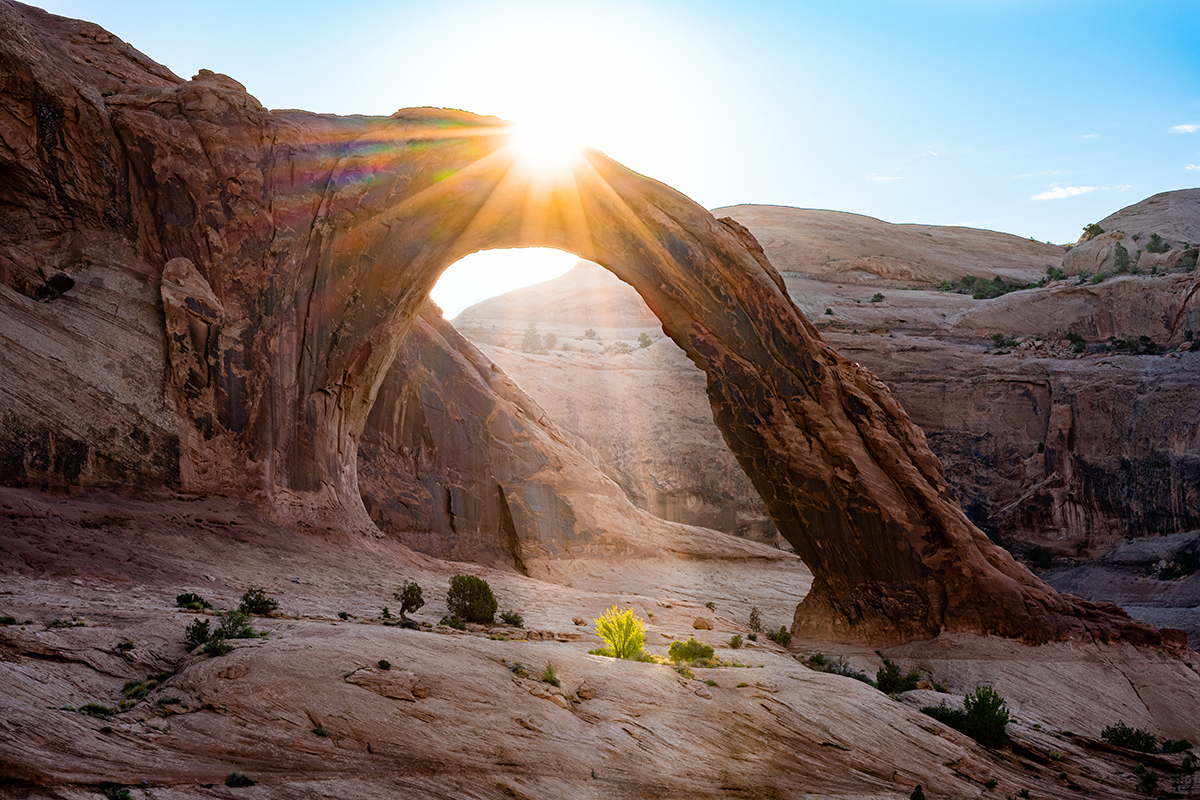Family Road Trip
Dino Sokocevic turns rugged landscapes into works of art with his Tamron 70-300mm telephoto lens.
Share the article:
More Photo Tips | Video Gallery | Photo Gallery | Enewsletter sign-up
By Jenn Gidman
Images by Dino Sokocevic
In May, Dino Sokocevic decided he wanted to take his parents and fiancee on a three-week adventure for nature photography, exploring some of his favorite sites, including Moab in his home state of Utah, as well as Arches National Park and Dead Horse Point State Park. “I also had a friend’s wedding in Oregon, so I shoehorned in a visit to Smith Point State Park during that same period,” he says.
Dino’s journeys through the vast, rugged landscapes prompted plenty of pictures, courtesy of his Tamron 70-300mm Di III RXD telephoto zoom lens on his Nikon Z Series camera system. “At under 6 inches long and weighing just 19.2 ounces, this lens is a compact, lightweight companion for its range, ideal for treks through the deserts and canyons of the Southwest, and the mountains and forests of Oregon,” he says. “My images were always sharp, even when the light was waning, and offered excellent contrast.”
DINO’S QUICK TIPS
Capture mountain landscape photography “portraits.”
I was showing off Arches National Park to my travel partners when I spotted these spring flowers set off against the desert landscape. I love using the 70-300mm as a portrait lens for nature photography, but with flowers or other environmental elements instead of people, because it isolates my subjects so well. The longer your focal length, the more you can make your subject pop. You don’t have to use a super-low f-stop, either—F4.5 or F5.6 will work just fine.

70-300mm (87mm), F5.6, 1/500 sec., ISO 100
Click image to view larger
Take advantage of compression.
The ability of a telephoto lens like the 70-300mm to compress the scene can make for a more powerful image. In my next photo taken at Arches National Park, showing that rock formation in front of the snow-covered mountains, the 70-300mm helped to visually pull those background mountains closer to the rock formation. If you shoot a scene like this with your smartphone, you’d still have that relatively large rock formation up close, but the mountains in the back would appear as a thin line on the horizon. They wouldn’t be as impressive as they appear here, for great nature photography.

70-300mm (229mm), F8, 1/250 sec., ISO 64
Click image to view larger
Follow the inverse shutter speed rule.
Some call it the reciprocal rule—meaning that your shutter speed should be at least “1” over whatever your focal length is. For example, in the sunset photo I took here in Smith Rock State Park, a volcanic region in Deschutes County, Oregon, I was shooting at 70mm, so choosing a shutter speed of at least 1/70 sec. would help ensure a tack-sharp photo. I often double that recommendation for nature photography and to prevent blurriness; in this case, I ended up shooting at 1/100 sec. I also tried to keep things steady by locking my elbows into my body and taking the photo in between when I inhaled and exhaled—a handy tip when you can’t or don’t want to bring a tripod.

70-300mm (70mm), F8, 1/100 sec., ISO 320
Click image to view larger
Make a boring sky compelling.
I love clouds, so when I see a lackluster sky, I’m not very excited. My parents, fiancee, and I were on an early morning hike on Potash Road outside of Moab, which eventually deposits you at the arch you see here. You have to climb up a small metal ladder to get to the top. As I poked my head over the edge, I wasn’t impressed with the sky, but the sun hit my eye—and I realized I could finagle the position of it so it appeared right above the arch.

70-300mm (96mm), F11, 1/200 sec., ISO 64
Click image to view larger
I create sunbursts whenever the opportunity arises: Just set your aperture to a higher number—say, F11 or F16—and gently move your body up or down, or side to side, to get the sun into optimal position. I love how that one tiny bush in front of the arch is illuminated here. I also appreciate how the lens controlled the ghosting and flaring created by the light bouncing around, thanks to the 70-300mm’s Broad-Brand Anti-Reflection (BBAR) Coating, which suppresses reflections.
Create a panoramic.
During our visit to Dead Horse Point State Park, I wanted to explore the capabilities of the 70-300mm lens more fully and craft a panoramic that showed off not only the desert landscape, but also the La Sal Mountains in the distance. Telephoto lenses like the 70-300mm are excellent for panoramics, as distortion disappears using longer focal lengths. I shot five or six vertical photos, then stitched them together. The panorama doesn’t have that “stretching” on the sides or in the corners that I was afraid I might see.

70-300mm (70mm), F8, 1/250 sec., ISO 64
Click image to view larger
This photo also shows off the detail possible with the 70-300mm lens. Those tiny antlike objects you see on the winding roads if you look closely are actually cars. I’m so impressed with this lens; it will be coming with me on plenty more excursions.
To see more of Dino Sokocevic’s mountain landscape photography, check out his Instagram.
Is your Tamron News subscription up to date? Click to subscribe to all editions of Tamron News featuring how-to tips, new product news, contest announcements and inspiration!
More Photo Tips | Watch Videos | Learn More About Tamron Lenses | Photo Gallery
